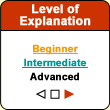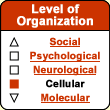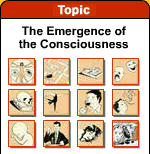|
|
|
|
 |
| The
Sense of Self |
 |
|
|
|





Brain
Rhythms: The Oscillations That Bind
The intralaminar
nuclei of the thalamus have neurons with long
axons that send projections throughout the entire cortex.
In return, the neurons in all the areas of the cortex that
receive these projections send their own projections back
to the intralaminar nuclei, thus creating a possible feedback
loop.
The neurons of the intralaminar nuclei
fire at a frequency of about 40 Hz, and Llinas believes that
their rhythmicity is the source of the rhythm that he detects
at the surface of the cortex. At every cycle, a wave would
originate in the intralaminar nuclei and spread out through
the entire cortex, somewhat like the way that the sweepline
on an old-fashioned radar screen illumined all the objects
that it passed through in a cycle.
Though cases of brain damage affecting
only the intralaminar nuclei are rare, we do know that if
these nuclei are damaged, the individual falls into a coma,
which supports the idea that these structures play a role
in conscious phenomena. |
The human brain has
several different oscillatory states that correspond to various
functional states. For example, when the neurons of the thalamus
are firing at a rate of two cycles per second (2 Hz), the
brain is in a state of deep
sleep. At 10 Hz, the brain is awake but not paying
any attention to the outside world. And at 40 Hz, the brain
is either awake and attentive, or in the process of dreaming.
From the standpoint of the thalamocortical
system, the general functional states present during REM
sleep and during wakefulness are fundamentally equivalent,
even though the ways that the brain processes sensory and
cortical information in the two states are different.
REM sleep may thus be regarded
as a modified attentive state in which the attention is
diverted from the sensory inputs and instead focused on memory.
As a corollary, wakefulness may
be regarded as a state of dreaming modulated by the constraints
imposed by specific sensory inputs. Thus, to paraphrase
Llinas, people’s waking lives would be the equivalent
of dreams guided by their senses. |
|
|
| NEURONAL ASSEMBLIES
AND SYNCHRONIZATION OF BRAIN ACTIVITY |
|
The famous“binding
problem”—the problem of how we mentally represent
distinct objects, each with its own specific characteristics—is
at least partly resolved by the phenomenon of neuronal
synchronization around 40 Hz. But that does not tell us how the
representation of a given object enters our consciousness while the
representations of others remain unconscious. In other words, it
does not tell us what determines which of the numerous assemblies
of neurons oscillating at various frequencies (and corresponding
to various representations of different objects) is going to come
to our conscious attention.
In the 1990s, Rodolfo
Llinas and his colleagues performed a series of detailed
studies on thalamocortical
interactions. From these studies, they developed a theory
that simultaneously integrates the data from the conscious state
of waking and from dreaming, addresses the binding problem, and
provides a criterion for determining which conscious representation
is going to be selected at any given time.
Though Llinas’s model is close
to several others, it is unique in that it proposes an
original solution to this last question. Llinas and his collaborators
developed their model using a highly sensitive brain-imaging
device called a magnetoencephalograph (MEG), which measures
the electrical currents in the brain indirectly (follow the
Tool module link to the left ). Using an MEG, Llinas observed
phased oscillations running from the anterior to the posterior
part of the cortex. Each of these waves lasted about 12.5 milliseconds
(ms) and was followed by a rest interval of 12.5 ms, for a
total time of 25 ms per cycle, which meant that this cycle
occurred approximately 40 times per second. In other words,
we are talking about the same 40-Hz
gamma oscillations associated with the problem of binding
the attributes of an object.
 |
These oscillations are apparently produced by the non-specific
nuclei of the thalamus, such as the intralaminar
nuclei (see sidebar and diagram to the left), whose
projections pass through the cortex from front to back.
Llinas’s model is based on the interaction between
two families of oscillators. One is this system of diffuse
projections from the thalamus that are responsible for the
waves that sweep through the cortex and provide a “context” for
conscious perception 40 times per second. The other family
is the other
well known system that connects the specific thalamic
nuclei to the corresponding specialized areas in the cortex
and helps to bind the various attributes of a single object.
(For example, one of these nuclei, the lateral
geniculate nucleus, receives visual information from
the retina and then passes this information on to the primary
visual area in the occipital cortex.) |
In short, Llinas’s hypothesis
is that the neuronal assemblies that correspond to a particular
piece of conscious content are those that oscillate in phase
not only with one another (to bind the various characteristics
of that content together), but also with the non-specific
oscillations that sweep through the cortex.
Llinas has shown that the presence
of these cycles correlates with coherent, conscious experiences:
these cycles occur continuously during wakefulness
and dreaming but not during deep sleep.
 |
For example, a subject
who is awake and engaged in any cognitive task will display
robust neuronal activity around 40 Hz. Thus, during wakefulness,
the two families of oscillators are coupled, and the specific
circuits respond to external signals. During dreaming, the
two families of nuclei are coupled, but the specific nuclei
do not respond practically at all to external signals. The
conscious contents come from the inside, from memories stored
in the brain (see sidebar). Lastly, in deep sleep, the two
families of oscillators are decoupled, and there are no conscious
contents. |
Certain experiments have also shown
that when a human subject is awake, a piercing sound will interrupt
the non-specific sweeping wave and start a new one, but when
the subject is in REM sleep, this same sound will produce a cortical
response without resetting the sweeping wave to zero. These findings
might reflect the fact that a stimulus of this kind will attract
our conscious
attention when we are awake, but not when we are in REM sleep
(and even less so when we are in deep sleep, during which the
sweeping wave is either absent or considerably attenuated).
In another set of experiments, the
sound that the subjects heard was a pair of clicks, separated
by an interval ranging from 3 to 30 ms. When the interval was
13 ms or more, the subjects could distinguish the two clicks,
but when it was shorter, they perceived only one. In addition,
the MEG recordings made during these experiments showed that
when the intervals were shorter than 12 ms, the sweeping oscillations
returned to zero only once, but when the intervals were longer,
they did so twice. These results seem to indicate that consciousness
is discrete rather than continuous, with the 12-ms interval representing
the “quantum of consciousness”—the basic time
unit of conscious experience.
One equivalent example in a non-laboratory
setting would be someone who is thinking as she walks down the
street, so that her brain is generating oscillations at around
40 Hz. So long as her mental representation of her external environment
is consistent with her actual surroundings, her brain will continue
to update this scene at a steady rate. But if she suddenly hears
a dog barking angrily close by, her 40-Hz cycle will be immediately
reset to zero to incorporate this new stimulus into the overall
scene, so that she can take this new information into account.
Every wave that sweeps across the cortex
in 12.5 ms thus creates a new image, but these images succeed
each other so quickly that they seem continuous to us, just
as the still images on motion-picture film create the appearance
of fluid motion if they are run through the projector quickly
enough.
Many neurobiological
models of consciousness hypothesize that neuronal assemblies
engage in a form of competition that acts as a process for
selecting conscious contents. Examples of such models included
the one developed by Crick
and Koch starting around the year 2000, as well as the
model of Edelman,
Dennett, and Baars.
But neurophysiologist William
Calvin may be the scientist who most fully incorporates
Darwinian selection processes into his model of brain function.
His “mental Darwinism” is based on the concept
of a cerebral code which is the analog
of the body’s genetic code, but serves the purpose
of selecting and reproducing conscious representations.
According to Calvin, each of our thoughts becomes our dominant
brain activity pattern for the moment that we are having
it, as the result of a process in which it is selected
from among numerous other variants that remain unconscious.
In Calvin’s view, the physical
substrate of this cerebral code, the basic unit of our thoughts,
consists of the smallest neuronal assemblies in the cortex,
and these assemblies consist of about 10 000 neurons each,
comprised in some 100 microcolumns. These
small neuronal assemblies would be similar in size to the
0.5 mm macrocolumns found in the associative cortex or to
the ocular
dominance columns in the primary
visual cortex, though their connections may be less
genetically determined.
According to Calvin’s hypothesis,
it is these columns’ electrical activity patterns,
forming a mosaic of hexagonal cells covering the entire cortex,
that enter into competition to become a conscious mental
image. And in the process of replicating itself to spread
through the cortical space, this cerebral code introduces
variants that may be the source of better-adapted behaviours.
This concept of the brain as an evolutionary
system not only is consistent with the principle of
natural selection but also fits very nicely with the concepts
of neuronal assemblies proposed by Hebb and
even by Dawkins.
Lastly, in developing his model, Calvin
also acknowledged that ultimately, our thoughts must always
serve the purpose of action.
And like many others before him (such as Varela and
Llinas), he summarizes this imperative with a shocking statement:
that far from being a combination of sensations and memories,
in the end our thoughts are nothing more than movements that
have not yet been actualized.
|
|
|






